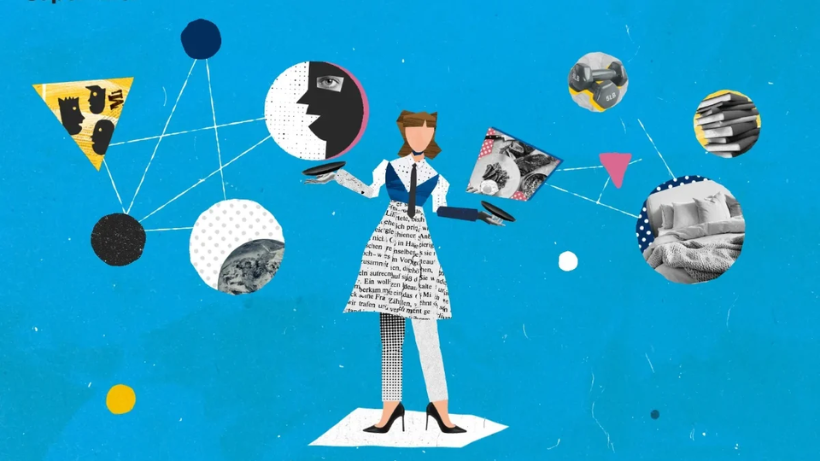Cut-out animation is an effective technique for 3D artists. It allows them to create engaging animations while saving time and resources. This style uses separate, movable parts of a character or object, making animation faster and more efficient. In this post, we will discuss the main techniques for creating cut-out animation and how 3D artists can apply them in production. Additionally, we will explore how 3S Cloud Render Farm can help speed up your rendering process.

What Is Cut-Out Animation?
Cut-out animation involves creating characters or objects in parts, which can be moved or repositioned to create the illusion of movement. Instead of drawing or modeling every frame, artists manipulate these parts to animate. While it’s mostly known in 2D animation, 3D artists have adopted this technique as well for more efficient workflows.
Cut-out animation is simple and effective, making it appealing to 3D artists. By using pre-designed parts, artists can focus on the animation process instead of creating everything from scratch.
Key Techniques for Cut-Out Animation in 3D
To create cut-out animation, you need to break down characters and objects into layers and parts. Here are the top techniques for 3D artists:
1. Layered Model Creation
First, create your models in separate layers. For example, separate the character’s arms, head, and legs into different parts. In 3D, these parts can be rigged and animated independently. This reduces the need for creating a new model for every movement.
For instance, to animate a walking character, you can adjust each body part independently rather than creating a new model for every frame.
2. Rigging for Movement
Rigging helps bring the parts of your model to life. Use bones to control the movement of each layer. By assigning bones to different parts, you can move or rotate them smoothly. Rigging can be done with inverse kinematics (IK) or forward kinematics (FK), which ensures each part moves naturally.
For example, when animating a walk cycle, you only need to move the rigged parts (legs and arms) instead of repositioning each layer manually.
3. Simplified Animation Paths
Cut-out animation simplifies the animation process by focusing on key movements. This method uses fewer frames to define the key poses, and the software automatically fills in the intermediate frames. This approach saves time and energy, especially when animating simple movements.
For example, when animating a character waving, you only need to define the starting and ending poses. The software fills in the rest.
4. Limited Color and Texture
Unlike traditional 3D animation, cut-out animation doesn’t require complex textures. Artists can use flat colors or simple gradients. This simplifies the creation process and speeds up rendering. By keeping the design simple, you can focus more on animation rather than textures.
For instance, use flat colors for the character’s clothes and skin, reducing the need for detailed textures. This also speeds up the rendering process.
5. Motion Tweens and Shape Morphing
Instead of animating every frame, you can use motion tweens and shape morphing in 3D animation software. This technique allows parts of the model to morph from one shape to another, making the animation process smoother and faster.
For example, animating a character’s mouth can be done by morphing between pre-designed shapes for each sound, instead of creating a new frame for every slight change.
Production Tips for Cut-Out Animation in 3D
To produce great 3D cut-out animations, here are some production tips:
1. Plan in Layers
Before creating your animation, plan out the movement in layers. Each part of the character should be designed so that it can move independently. This way, you avoid unnecessary rework.
2. Use Non-Destructive Techniques
Always use non-destructive methods, such as using layers and modifiers, so you can make changes without affecting the original models. This keeps your workflow flexible and fast.
3. Simplify Shaders and Lighting
For cut-out animation, use simple shaders and lighting. This will reduce rendering time while maintaining the focus on the animation itself.
4. Leverage Cloud Rendering
Rendering can be time-consuming, especially for 3D animation. 3S Cloud Render Farm can speed up the process by offloading rendering to powerful cloud servers. With access to high-performance GPUs and CPUs, 3S Cloud Render Farm ensures your animation renders faster, allowing you to meet deadlines with ease.
How 3S Cloud Render Farm Enhances Your Cut-Out Animation Workflow
While cut-out animation simplifies the animation process, rendering can still take time. 3S Cloud Render Farm offers cloud rendering services that allow you to offload heavy tasks to high-performance servers. By using 3S Cloud, you can speed up rendering and focus on creating instead of waiting.
With 3S Cloud Render Farm, you can render complex cut-out animation scenes faster, no matter how many layers or parts your animation involves.
>>> Read more: Why Do Freelancers Need to Use a Render Farm?
Conclusion
Cut-out animation offers 3D artists an efficient way to produce quality animations without the need for complex models. By using techniques like layered modeling, rigging, and motion tweens, artists can streamline their workflow and create engaging animations. Additionally, using services like 3S Cloud Render Farm can help reduce rendering times, allowing you to focus on creativity. Whether you’re a beginner or an experienced artist, cut-out animation is an excellent tool for your 3D animation toolbox.